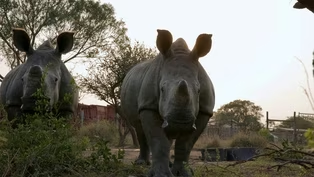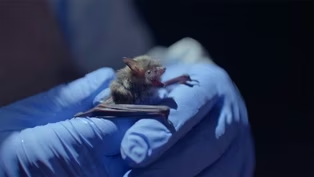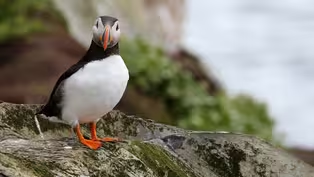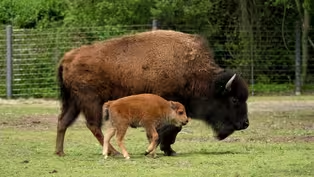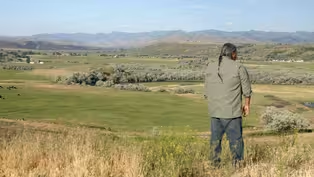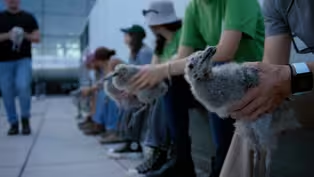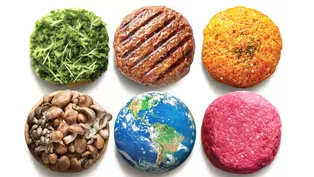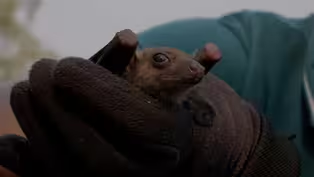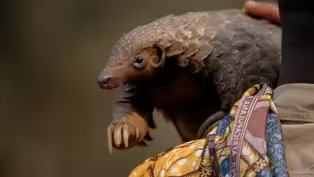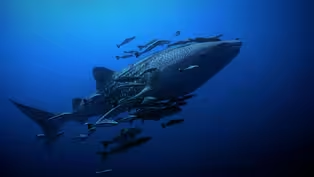
Vertical Meadows | WILD HOPE
Special | 7m 36sVideo has Closed Captions
Can vertical meadows bring wildlife back to cities?
As urban expansion quickly replaces natural habitats, façade engineer Alistair Law has discovered a new way to restore native ecosystems for pollinators and create natural spaces for us all within cities – by turning the walls of buildings into meadows.
Problems playing video? | Closed Captioning Feedback
Problems playing video? | Closed Captioning Feedback
Major support for NATURE is provided by The Arnhold Family in memory of Henry and Clarisse Arnhold, Sue and Edgar Wachenheim III, The Fairweather Foundation, Charles Rosenblum, Kathy Chiao and...

Vertical Meadows | WILD HOPE
Special | 7m 36sVideo has Closed Captions
As urban expansion quickly replaces natural habitats, façade engineer Alistair Law has discovered a new way to restore native ecosystems for pollinators and create natural spaces for us all within cities – by turning the walls of buildings into meadows.
Problems playing video? | Closed Captioning Feedback
How to Watch Nature
Nature is available to stream on pbs.org and the free PBS App, available on iPhone, Apple TV, Android TV, Android smartphones, Amazon Fire TV, Amazon Fire Tablet, Roku, Samsung Smart TV, and Vizio.
Buy Now
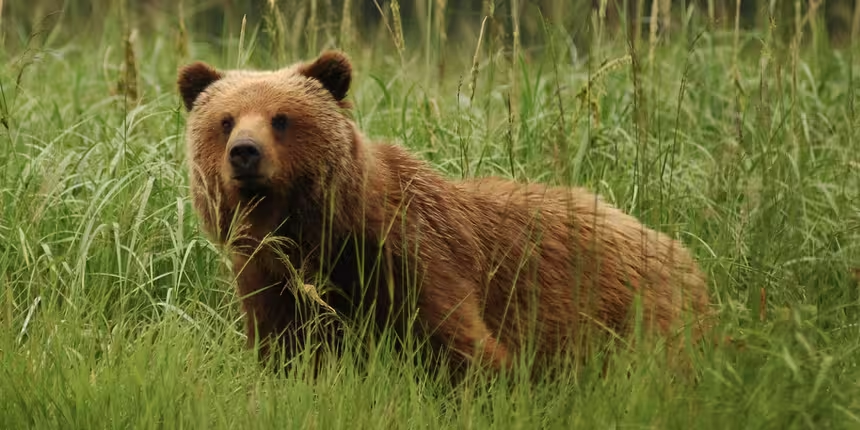
Explore More Ways to Watch
Bring the beauty and wonders of wildlife and natural history into your home with classic NATURE episodes.Providing Support for PBS.org
Learn Moreabout PBS online sponsorshipMore from This Collection
WILD HOPE is a new series of short films that highlights the intrepid changemakers who are restoring our wild places and sparking new hope for the future of our planet.
Video has Closed Captions
How does a densely populated nation like Singapore transform into a lush green oasis? (14m 51s)
Video has Closed Captions
For decades, rhinos have been the face of poaching. (16m 28s)
Video has Closed Captions
As a deadly fungus devastates North America’s bats, scientists are testing new ways to save them. (14m 47s)
Video has Closed Captions
In the Westman Islands, one community has banded together to save lost young puffins. (13m 15s)
Video has Closed Captions
Sixty million American bison once thundered across the prairies of North America. (18m 52s)
Reclaiming Bear River | WILD HOPE
Video has Closed Captions
The Bear River was once a lush area with wetlands, hot springs, and abundant wildlife. (17m 25s)
Building for Birds | WILD HOPE
Video has Closed Captions
Millions of migrating birds pass through our yards, but glass windows pose a deadly threat. (16m 3s)
Mission Impossible | WILD HOPE
Video has Closed Captions
Meet the genius behind the plant-based Impossible Burger. (39m 41s)
Pangolin Protectors | WILD HOPE
Video has Closed Captions
Due to the demand for their scales, pangolins are the most trafficked animal in the world. (12m 24s)
Way of the Elephants | WILD HOPE
Video has Closed Captions
Elephant migration corridors in India are a necessary thoroughfare for one of the largest animals. (15m 11s)
Whale Shark Homecoming | WILD HOPE
Video has Closed Captions
A renowned spiritual leader is inspiring fishermen to become guardians of the world’s biggest fish. (16m 49s)
Providing Support for PBS.org
Learn Moreabout PBS online sponsorship♪ ALISTAIR: The vertical really does offer another perspective on where greenery can go.
You realize most people had never seen any of these growing vertically before.
SCARLETT: No, no, yeah.
ALISTAIR: And I think .. at all our buildings and see that as the next opportunity.
We need to think of new ways to bring nature into the urban space.
♪ I'm a facade engineer, and I kind of- I'm always thinking about how we can use existing constructive systems for buildings and kind of adapt them and bolt on nature.
♪ I kind of realized the vertical was an untapped resource because cities are so dense.
Greening is really important because more and more people are moving into our cities so we need to create better environments for them.
We've lost 97% of the meadows in the UK since 1930.
97%.
And for me, the idea of bringing it back and kind of educating people about it is, is part of getting people to recognize the value of it.
NARRATOR: Habitat loss to urban areas can't be restored as it was, but Alistair's approach offers opportunity for native plants to return in a different way, by growing directly on the walls of buildings.
Not only does that bring greenery back into the city, it creates habitat for the birds, insects and other creatures that once lived there.
ALISTAIR: I think these- these are my favorites.
They're normally the earliest flowering species.
This is what supports the pollinators in cliff zones and so very exciting that we've been able to reproduce it in our own little cliff.
♪ NARRATOR: The "cliff" in this case is the outside of Alistair's office in London, which serves as his "laboratory" and a stepping stone for insects and birds passing through the city.
(bee buzzing) Each vertical meadow contains a diverse mix of native plants that are grown on site.
ALISTAIR: Most living wall systems are not about seasonality, it's just about keeping green.
What we're doing is creating a- a seasonal living wall.
NARRATOR: Alistair's meadows aren't just pretty flowers; they're a natural mix of plants one would find in the wild in this region, and they change throughout the year.
ALISTAIR: All of this kind of messiness and and kind of brownness is part of life.
You've got this kind of a mixed sward of kind of leaves, grasses, et cetera, which allows space for these kind of critters to- to grow in.
It's actually building that ecological world.
The great thing about wildflowers is that they don't need much water and they'll pretty much grow in any condition which when you're trying to grow vertically, is perfect.
♪ NARRATOR: Alistair designed a metal cladding system as a permanent fixture, and a temporary wrap meant for construction sites.
Both repurpose existing engineering systems to work in new ways.
This wrap contains a layer of waterproof backing, recycled clothing, seed paper and reusable tubes that deliver water.
The leftover water from irrigating the plants is then fed back into the system.
♪ Together, the two options allow many available wall spaces to become a bit of habitat in the city.
ALISTAIR: So this will be on a construction site and this mat will be installed in an hour maximum, and you've got about 10 meters of living wall ready to go.
We've chosen about 25 species to ensure that they're actually the same sort of plants that would've lived there anyway.
NARRATOR: Alistair gets his seeds from the largest producer of native wildflower seeds in the UK, one who shares his passion for innovation and restoring biodiversity.
DONALD: I've been a botanist all my life, and I've been growing wild species for 43 years.
We use hand harvesting to collect stock seed of pure species.
The flower species are important because they support the invertebrates and they support the birds.
NARRATOR: Unlike single- species crops like ryegrass, which blanket much of the UK, Donald's meadows contain many different species of native plants.
That greater variety supports more species of insects and other animals.
And the genetic variety present in wild populations offers a crucial additional benefit.
♪ DONALD: The biodiversity here within this field is huge, there's a range of up to 50 species here and each species has got a huge range of variation.
So, the population is able to respond to changing environment and conditions.
♪ NARRATOR: Donald and his daughter rely on a herd of shire horses to help manage the vegetation on the family farm.
DONALD: They have a preference for grasses over flowers as opposed to sheep, which have a preference for eating flowers.
And we manage them by moving them from field to field as a herd.
(horse snorting) What we've done over the years is develop a methodology and to show that it's possible to restore a species-poor grassland to species-rich grassland.
NARRATOR: Now, his seeds are doing something similar in cities.
DONALD: It may not be a meadow like we have here.
It might- it would be something different that's suited to the urban setting and can contribute to ecosystem services providing within the city clean air, water, pollinator services.
(bees buzzing) NARRATOR: By supplying the seeds to Alistair, Donald is establishing plants in the city that will provide habitat and food for butterflies, birds, and other animals.
If enough meadow is planted they'll create wildlife corridors throughout the city.
Scarlett Weston is working with Alistair to build what she calls "B-lines", part of a larger network of corridors she's helping to develop across Great Britain.
SCARLETT: Most species of solitary bee can only travel 300 meters.
If they don't have a flower to land on they will not have the energy to continue that flight.
By having the stepping stones of- of wild flowers along the route, they can move through the landscape.
ALISTAIR: Yeah, come have a look.
Come have a look.
SCARLETT: Oh yeah!
ALISTAIR: There we are.
SCARLETT: That's very cool.
ALISTAIR: Yeah.
NARRATOR: For Alistair, vertical meadows are a way for cities to become more connected to the natural world.
ALISTAIR: Actually, what will come out of it in maybe 10 years time is a completely different kind of habitat, and that's quite exciting.
We've gotta be adaptive in our view of what nature is.
♪ ♪ ♪ ♪

- Science and Nature

Explore scientific discoveries on television's most acclaimed science documentary series.

- Science and Nature

Learn how centuries of knowledge helped our ancestors understand the mysteries of space.












Support for PBS provided by:
Major support for NATURE is provided by The Arnhold Family in memory of Henry and Clarisse Arnhold, Sue and Edgar Wachenheim III, The Fairweather Foundation, Charles Rosenblum, Kathy Chiao and...

